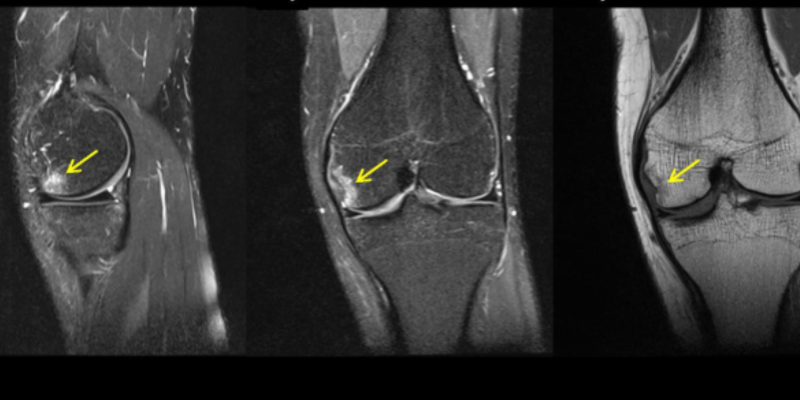What overuse injury means?
There are basically two types of injuries: Acute injuries and overuse injuries. Acute injuries are usually the result of a single, traumatic event (macro-trauma). Common examples include wrist fractures, ankle sprains, shoulder dislocations, and hamstring muscle strain.
The absence of a single, identifiable traumatic cause has been traditionally used as a definition for a causative factor of overuse injury. Excessive loading, insufficient recovery, and doing too much too fast can increase injury risk by exposing the individual to relatively large changes in load. The musculoskeletal system, if subjected to excessive stress, can suffer from various types of overuse injuries which may affect the bone, muscles, tendons, and ligaments.
Why overuse injury occur?
The human body has a tremendous capacity to adapt to physical stress. In fact, many positive changes occur as a result of this. With exercise and activity, bones, muscles, tendons, and ligaments get stronger and more functional. This happens because of an internal process called remodeling. The remodeling process involves both the breakdown and build-up of tissue. There is a fine balance between the two and if break down occurs more rapidly than build-up, injury occurs.
This can happen when you first begin a sport or activity and try to do too much too soon. Typically in runners, when they start running and they don’t have a training plan and increase their millage so quickly without putting time build mileage gradually. This set them up for an overuse injury. This is because they are trying to do too much and do not allow their body adequate time to recover. As a beginner, they may also have a poor technique that may predispose them to overuse injury. With overuse injuries, it often takes detective-like work to understand why the injury occurred.
What factors are responsible for overuse injuries?
Training errors are the most common cause of overuse injuries. These errors involve a too rapid acceleration of the intensity, duration or frequency of your activity. A typical example is a runner who has run several miles three times a week without any problem. The same runner then begins advanced training for running in a marathon, running a longer distance every day at a faster pace. Injury or break down is inevitable. Overuse injuries also happen in people who are returning to a sport or activity after injury and try to make up for the lost time.
There are also technical, biomechanical and individual factors. Proper technique is critical in avoiding overuse injuries. Slight changes in form may be the culprit. For this reason, coaches and therapists can play a role in preventing recurrent overuse injuries.
Most common overuse injury in runners
Tendinopathy
Tendinopathy (commonly called tendinitis) in the acute phase caused by inflammation in a tendon (band of tissue that connects muscle to bone). Tendinopathy generally occurs when a tendon rubs excessively against an anatomical structure or is subjected to a load that is greater than it can bear. Common sites of tendon injury include the Achilles tendon and the patellar tendon in the knee.
Bursitis
Bursitis is the inflammation of one or more bursae caused by excessive local friction. Bursae are small fluid-filled sacs located between bones and tendons in different parts of the body. They help tendons slide smoothly. The ones most frequently injured include the retrocalcaneal bursa in the heel and the trochanteric bursa in the hip region.
- Stress Fractures
- Stress fractures are microfractures that are caused by repeated stress to a bone. These fractures usually occur in the lower limbs, mainly in people who practice high impact sports such as running or those involving a lot of jumping. The most common sites for stress fractures in the foot are the second and third metatarsals in the foot.
- Patellofemoral Pain Syndrome
- Patellofemoral syndrome (PFPS) is a condition characterized by pain from the tissues within or surrounding the joint between the knee cap (patella) that is magnified in the setting of increased compressive forces to the patellofemoral joint. There are no specific causes for PFPS, but there is a range of possible factors, which increase your risk of developing it. Your PFPS is unique to you, and factors contributing towards your PFPS may be different than someone else with the same diagnosis.
1- Build Mileage Gradually
Probably the number one cause of running injuries is when runners do too much, too soon, too fast. The body needs time to adapt to training changes and jumps in mileage or intensity. Build your weekly training mileage by no more than 5 to 10 percent per week. For example, if you follow the 5 percent rule and run 10 miles the first week, do just 10.5 miles the second week, and so on.If you are recovering from an injury or are brand new to running, it is best to stay close to the 5 percent limit or you’ll run the risk of injury or re-injury. More experienced runners who have no history of injuries can safely train closer to the 10 percent limit.
2- Strength Training
Several studies have recommended strength training as a part of your weekly running program to improve running economy. You may need to get some help from your strength and conditioning coach or your qualified therapist regarding your training program. They highlighted, strength training programs including low to high-intensity resistance exercises and plyometric exercises performed 2-3 times per week for 8-12 weeks is an appropriate strategy to improve the running economy in long-distance runners. (Read more).In another research paper, the running economy is improved by performing combined endurance training with either heavy or explosive strength training. They Also highlighted strength training can improve lactate threshold and maximal speed in runners. (Read more).
6 Weeks Strength & Conditioning for Runners
The 6 weeks (12 sessions) strength and conditioning program has been designed for runners to focus on elements such as Strength Training, Load Management, Running Technique, and their Recovery Plan to enhance their running economy and also help them to minimize running injuries. Whether you are an amateur runner who would like to start your 5k or 10k run, or a high-level athlete you can use this program. We will customise your training intensity according to your goals and preferences.
3- Recovery time
Many runners put a great deal of thought into maximizing their training but relatively many runners fail to plan their recovery in the same detail. Training is often planned in the short term, mid-term (over the next 3 to 4 weeks) and longer-term (the competitive season or year as a whole). You may approach recovery in a similar way.
- Short-term recovery – consider recovery strategies for each session such as cooldowns, pre, and post-run fuelling and modifying sleep.
- Midterm recovery – plan training and recovery over a 3 to 4 week period and beyond to ensure that training increases gradually and recovery is modified to suit this change. In essence, if you train more, recover more! This might include a planned ‘recovery week’ every fourth week where the training load is reduced.
- Long-term recovery – Planning training across a whole year to prepare for key competitions can help optimize performance and reduce fatigue.
FOLLOW US ON YOUTUBE AND GET ACCESS TO OUR WEEKLY FREE REHABILITATION EXERCISES.
Our Approach
Dublin Sports Injury Clinic is a physical therapy clinic based in Pearse Street, Dublin 2. We have a holistic approach to our assessment and treatment. The initial assessment helps us to explore the cause of your injury and help you to get pain free shortly and stop any further injuries. We will design a customized training program for you to start with, and we will coach you and monitor your progress closely. We will prescribe relative rest or modified activities as required. Depending on the individual requirement, we apply manual therapy accompanied by stretching to restore tissue elasticity and reduce the strain in the muscle-tendon unit with joint motion.
Next step
Want to get in touch with our team of a therapist or you are looking for some advice? Simply fill in your details below & we get in touch with you shortly.
Disclaimer: This article is for information only and should not be used for the diagnosis or treatment of medical conditions. You can contact us if you would like to book an appointment or get some advice from our therapist.


One Response
Thank you, very informative and practical for runners.